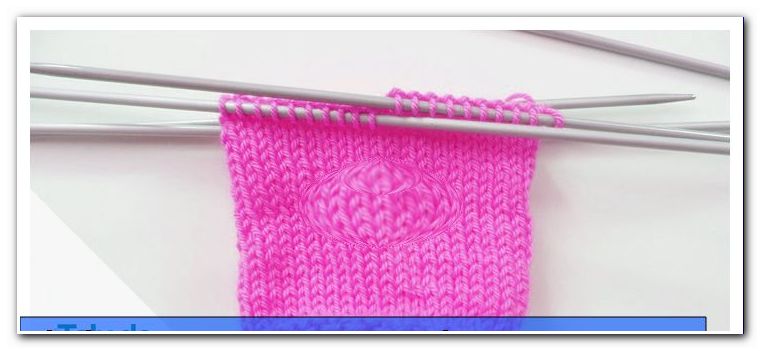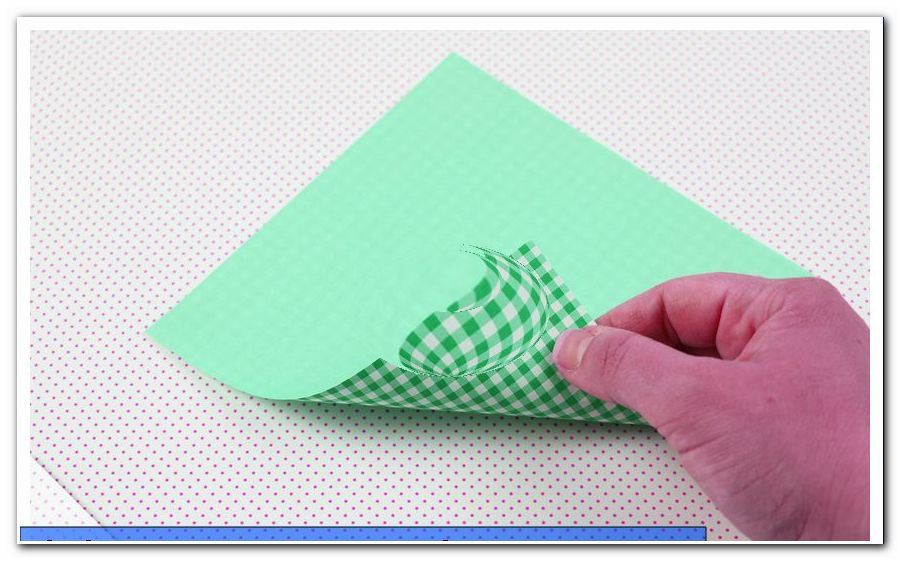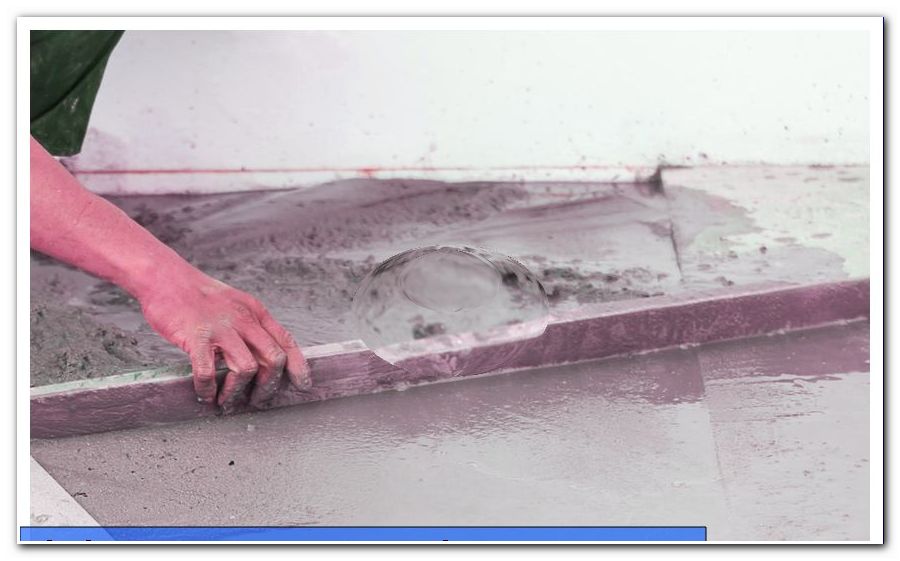Sewing wrap skirt - free DIY instructions incl. Pattern

- Material and preparation
- Pattern for the wrap skirt
- material selection
- Sew on wrap skirt
- variations:
- Quick guide
You should be able to wear a skirt in any season - and you can do that too! Depending on the pattern and fabric selection skirts are very flexible gestaltbar. I would like to sew some skirts, starting with a wrap skirt. To make it a bit more exciting, I also want to attach seam pockets to my wrap skirt. If these are sewn exactly, you can not see from the outside that they are there. Especially for us women, this is very convenient, if you just want to get out and do not need to take the handbag with you. Keys and purse fit loosely into the wrap skirt.
In this guide, I'll show you how to make a pattern for a wrap skirt, how to sew the skirt, and how to make and sew a suture bag.
Difficulty level 2/5
(this wrap skirt tutorial is for beginners)
Material costs 1-2 / 5
(depending on fabric choice and size per wrap skirt about 10-20 euros)
Time required 1.5 / 5
(depending on experience and accuracy without sewing pattern about 60min per wrap skirt)
Material and preparation
Pattern for the wrap skirt
You can easily draw the desired pattern yourself. For this you first need your waist and hip size. You also need the distance between these two readings. Divide these two values by four. On a piece of paper from the left edge, draw the waist and hip width at the measured distance. Do not start at the top of the sheet. Then record the desired skirt length, which you can also measure directly on the body. My skirt will end just above the knees.

Now draw a bow from the waist to the hip and then down. It's a matter of taste from the hip. You can reproduce the shape of an upturned tulip by making it a bit narrower down, drawing straight down, or flipping the wrap skirt slightly in A-line form. At the top of the waist, the skirt should be slightly bent upwards at the sides, so that it fits nicely to your body later on, you draw the bow upwards for about 3cm and start the bow at right angles. It ends at the edge of your drawing sheet at right angles again. I've written the measurements on my pattern, that's about size 42 to size 44. The measurements of your skirt will of course differ, but it's a good clue.
The pattern is already almost finished. What lies ahead of you is the back of the wrap skirt. Now you need the two front overlapping parts. To do this, draw a vertical line at the top of the waistline about 5cm from the right edge. Here you can simply fold over the pattern to cut it - this cut piece is cut once each side reversed. So you have in the end three sections.

Later, a wider band with the length of the waist length is added to the waistband.
Tip: When cutting, remember to add the seam allowances and the seam allowance at the bottom. In addition, I have also added to the straight lines of the overlapping cut hem accessories, so I can complete it nicely. However, if you want to work with documents here, you still need seam allowances and, depending on the fabric, a seam-securing tape.
Starting with a straight line of approx. 15 cm length, you draw an asymmetrical curved curve for the pockets, which is also about 15 cm long at its widest width. Cut them twice in two layers, so that you have two opposite pockets. (In total, there are four cuts.)

material selection
I sew my skirt for the transitional period, so I opted for a nice fine-knit jacquard in yellow and gray because it is a little thicker and therefore warms better. This fabric is stretchy. If you want to use a non-stretchy fabric, include 1-2 cm of goodness in width. You may also want to sew a rubber band into the waistband. For my skirt including waistband, I needed exactly half a meter of the fabric to full width. In addition, I have used four remaining pieces of a jersey fabric with the minimum dimensions 16 x 16 cm for the bags. So they stand out better in the manual and well sewn they should not be visible from the outside at all.
Tip: If you want to sew a fabric that has been roughened inside, it can later "crawl up" if you wear pantyhose. In that case you should feed him. Since I find that too costly for a "simple" wrap skirt, I decided against it.
Now cut all skirt parts and the pockets with seam and hem allowances.
Sew on wrap skirt
First I lined the open edges of the overlapping parts, and I punched the edge out twice and stitched it on both sides.

The easiest way to do this is to iron all the desired edges in advance and fix them in the way they should be sewn. My fabric has wrinkles on the outside, as the left side of the fabric is pretty and in perfect color matches the outside. Of course, you can also fold inwards or work with receipts. I have also implemented this step on the second overlapping section.

Now lay the back skirt part (the big without straight vertical edges) with the right side upwards in front of you and put a pocket cut exactly five centimeters from the top to the edge and put it in place. Since the bag is cut straight at the edge and the skirt has a curve, the bag can easily overlap slightly. Just keep in mind that all pockets should be sewn together as equally as possible. Then sew the pocket piece in the bow of the skirt. Start and end with it about 0.5cm from the edge. Sew on beginning and end.

Now fold the bag part inwards on the left side of the skirt and iron the edge tightly. Next, attach the two pockets to the overlapping parts. Again, the edges are ironed again exactly. Then fold the bag parts outwards. Then place the overlapping pieces on the right side of the skirt (ie with the "nice sides" together) on the back skirt so that the pockets are exactly on top of each other, then pin them down and sew the entire length with the pocket.

So the first five inches of skirt side seam, needle in the fabric, feet up, turn, feet down, once around the bag, needle in the fabric, feet up, turn, feet down and the rest of the side seam to the very bottom. Turn the skirt over and lay it closed in front of you and iron out all seams exactly.

The bags are not visible from the outside, unless you know they are there. Seam the lower skirt edge completely. I punched and quilted the fabric inside.

Measure now the waist length of the skirt and cut in this length (plus seam allowances) a strip with at least 7 cm height. I want to make my waistband from the inside of the fabric, so I put the strip on the left side and sew the short ends and shorten the seam allowances especially in the corner. I also iron once over the half-folded fabric over it to get a nice edge. Then I open the strip and iron on one side 1 cm inwards.

I now sew the side of the strip without 1 cm mark at the waist. If you are unsure, get stuck first. Especially with stretchy fabrics, it is otherwise not even. Then fold the strip on the inside and stick it so tight that the previous seam is covered by about 2-3 mm.

Finally sew all the fabric layers together from the outside in the seam shadow (ie exactly where the two fabrics from the previous seam meet). Carefully pull on the waistband outwards so that you can sew exactly on the seam. And that's how the federal government looks finished ironed. Now only the closure is missing:

I opted for snaps. If you want to do this, it is better to reinforce the affected areas with iron-on fleece in advance or to add some woven fabric to the printer before pressing it. But you can also make normal buttonholes and sew on buttons. Also toggle closures and buckles are possible.
Lay the skirt in front of you and fold it the way you would like to wear it later on. Mark the ends on both sides and attach the desired type of closure.

And now your new wrap skirt is ready.
Have fun sewing!

variations:
Instead of the covenant, you can also attach a band that goes beyond the cuff on both sides (an extension of the covenant) so you do not need any fasteners and can easily tie the skirt. The practical thing about a wrap skirt is that you can attach applications and other decorative elements later. For example, ruffles or lace can be incorporated at the bottom hem to make it more festive or playful. Also patch pockets are possible. But I would not make it too big. Depending on the type of fabric and the s of the bag, the fabric could be unattractive.
If you make the skirt 1-2 cm wider, you can also put on your pants in the cooler months to keep it nice and warm. The skirt can then be put on and taken off quickly like a jacket when you go in or out. This is especially something thicker, warm fabrics such as woolen walk or coat fabrics. But also alpine fleece should work.
For a playful look, you can also attach a valance at the bottom instead of ruffles or lace. Particularly thin fabrics such as cotton woven fabric or jersey are suitable for this, so that the entire layers do not become too thick or protrude too far (in the case of fulled fabric). For girls, I could also imagine tulle.
Quick guide
1. Draw pattern for skirt and pockets
2. Trim everything, taking into account the seam and hem allowances
3. Line edges on overlapping parts (iron!)
4. Attach the seam pockets and sew skirt sides together (iron!)
5. skirt the bottom of the skirt
6. Measure the waist length and cut the waistband
7. Fold and iron the waistband lengthwise and iron in 1 cm on one side
8. Sew on the waistband from the outside, fold it over, fasten it and sew it in the seam shadow
9. Attach the closure on both sides
9. And you're done! (if necessary iron everything again)
The twisted pirate




